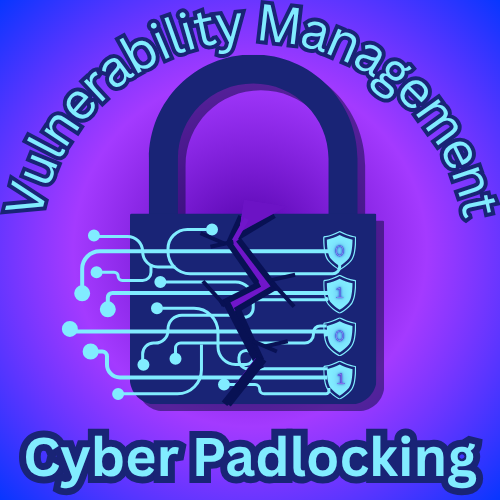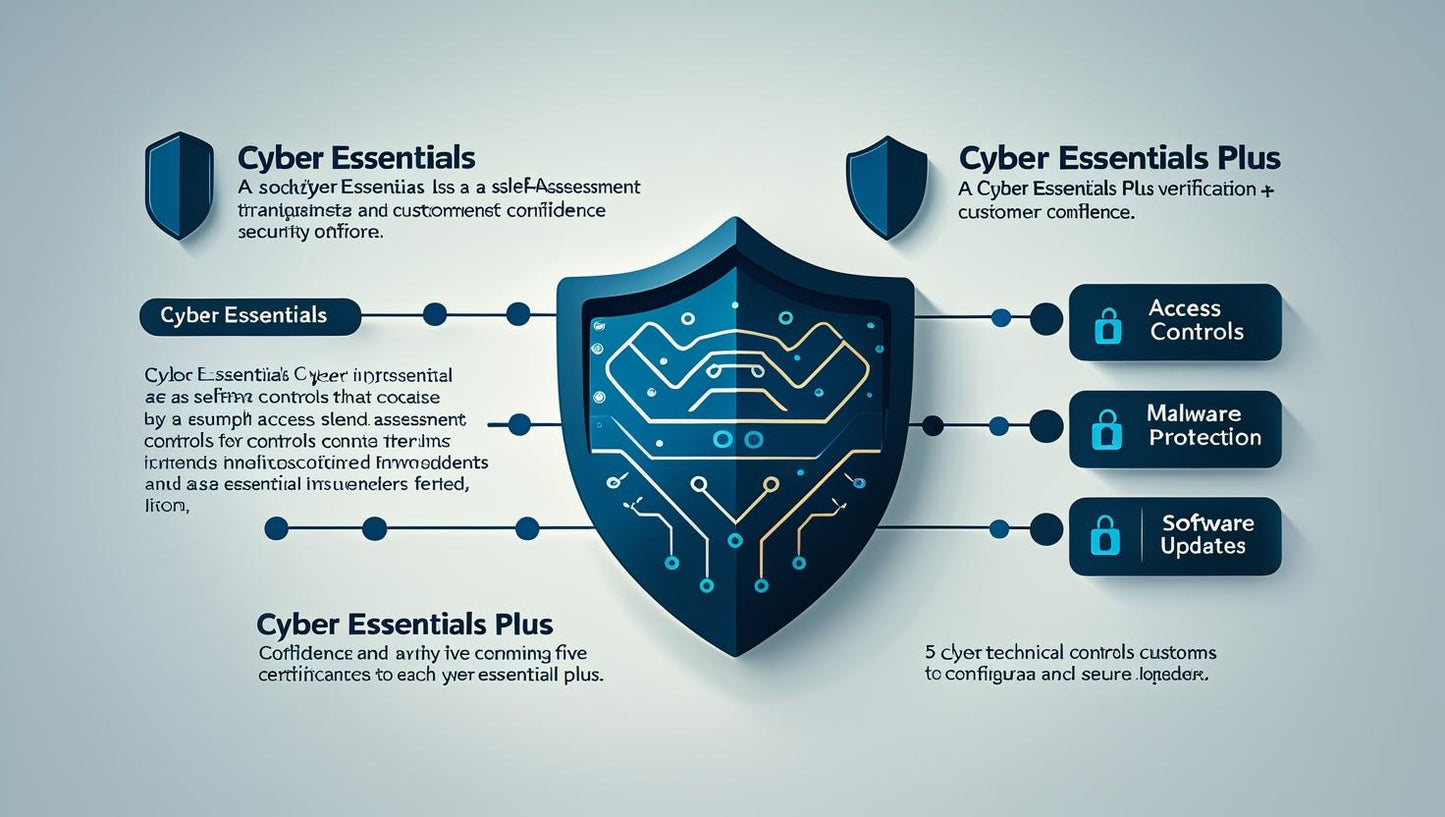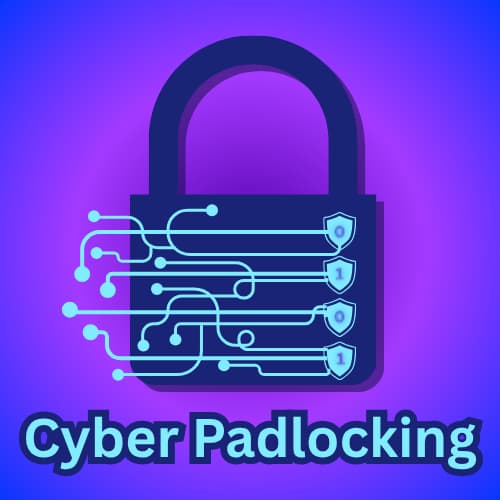Cyber Padlocking
Stay Secure with Smart Patch Management and Cyber Essentials Compliance
Stay Secure with Smart Patch Management and Cyber Essentials Compliance
Importance of Patch Management and Cyber Essentials Compliance
In today’s digital world, businesses of every size rely on technology to operate, innovate, and compete. But as IT systems evolve, so do the threats against them.
One of the most overlooked yet most powerful defences your organization can deploy is effective patch management which is keeping your systems, software, and devices up to date against known vulnerabilities.
Failing to patch doesn’t just risk inconveniencing you and your customers it can mean catastrophic data breaches, downtime, and reputational damage. In fact, many major breaches (including the infamous Equifax incident) were caused by unpatched systems where fixes were already available.
What Is Patching and Why It Matters?
A patch is a software update released by vendors (like Microsoft, Apple, or Oracle) to fix security flaws, improve performance, or enhance stability.
Patches are essential to:
- Fix known security vulnerabilities
- Improve performance and reliability
- Ensure compatibility with new standards or systems
- Maintain compliance with laws and frameworks (GDPR, HIPAA, PCI DSS)
When patches aren’t applied, your systems remain open for cybercriminals to move in fast often exploiting known vulnerabilities within hours of public disclosure.
The Cost of Neglecting Patch Management can be;
-
Security Breaches and Ransomware Attacks
Unpatched systems are the easiest targets for attackers. These vulnerabilities are often public knowledge, and automated bots continuously scan the internet to find and exploit them. -
Compliance and Legal Penalties
Regulations such as GDPR and PCI DSS require prompt application of security updates. Failure to do so can result in steep fines and legal consequences. -
Downtime and Lost Productivity
System instability, crashes, and outages due to outdated software can grind your business to a halt. -
Reputation Damage
A single breach can erode years of customer trust rebuilding it costs far more than preventing it.
Why SMBs Are Now Prime Targets
Small and mid-sized businesses (SMBs) are no longer under the radar. Attackers view them as low-hanging fruit: less protected but often holding valuable data or access to larger organizations.
A strong patch management policy is therefore not optional it’s the foundation of a resilient cybersecurity posture. Implementing a structured vulnerability and patch management process dramatically reduces risk and demonstrates due diligence to clients, partners, and regulators.
Building a Proactive Patch Management Strategy
-
Know What You Have (Asset Inventory)
You can’t protect what you don’t know exists. Maintain a live inventory of all devices, applications, and operating systems. Automated discovery tools can help. -
Prioritize and Categorize
Focus on critical patches first particularly those rated high-risk or being actively exploited. Use CVSS scores or vendor severity ratings to guide decisions. -
Test and Validate
Always test patches in a controlled environment before deployment. This prevents downtime or compatibility issues in production systems. -
Automate Where Possible
Manual patching is slow and error prone. Use trusted automated tools (e.g., Microsoft WSUS, Red Hat Satellite, or cloud-based solutions) to ensure consistency and speed. -
Schedule and Backup
Set a regular patching cycle (e.g., monthly) but have an emergency process ready for zero-day flaws. Always back up critical data before patching. -
Verify and Audit
Confirm successful deployments and maintain audit logs. This demonstrates compliance and readiness during security assessments. -
Train and Communicate
Ensure all relevant staff understand patching cycles, expected downtime, and emergency procedures. A well-informed team prevents accidental disruptions.
Beyond Patching: Strengthening Your Cyber Hygiene
Patching is one piece of the cybersecurity puzzle. A Cyber Essentials certification takes your defence further by proving that your organization meets key cybersecurity controls including secure configuration, access control, malware protection, and firewalls.
Together, regular patch management and Cyber Essentials compliance form the backbone of a resilient security posture protecting your data, reputation, and operations from evolving threats.
Our Vulnerability Management & Cyber Essentials Services
We help businesses of all sizes build confidence in their cybersecurity posture with:
-
Comprehensive Vulnerability Assessments
Identify, prioritize, and remediate security gaps across your IT estate. -
Automated Patch Management Solutions
Keep your systems protected and compliant with minimal manual effort. -
Cyber Essentials Certification Support
Get certified and demonstrate to customers and partners that you take cybersecurity seriously. -
Ongoing Monitoring & Reporting
Real-time dashboards, audit-ready reports, and expert guidance to maintain continuous protection.
The Bottom Line
Cybersecurity isn’t just about technology it’s about trust, resilience, and business continuity.
Patching might seem like routine maintenance, but it’s one of the most cost-effective ways to prevent downtime, breaches, and fines.
Think of it like this:
You don’t wait until your house is burgled to fit locks and an alarm.
Patch early. Patch often. Stay secure.
Ready to Strengthen Your Defences?
Let us help you implement a proactive patch management and Cyber Essentials strategy that protects your business from the inside out.
📞 Contact us today to schedule a vulnerability assessment or learn how we can help your organization achieve Cyber Essentials certification.
Understanding Patch Management
Patch management is essential for maintaining the security of systems and software. It involves regularly updating and patching software to fix vulnerabilities that hackers could exploit. Staying compliant with the Cyber Essentials framework ensures that these updates are part of a broader security strategy. Organizations can mitigate risks significantly by adopting effective patch management practices. Not only does this protect vital information, but it also builds trust with clients and partners.
Benefits of Cyber Essentials Compliance
Cyber Essentials compliance is a government-backed scheme aimed at helping organizations protect themselves against common cyber threats. By aligning with these standards, companies demonstrate their commitment to cybersecurity. This compliance covers five key areas, including controlling access, securing devices, and managing software vulnerabilities. Therefore, achieving this compliance reinforces a company’s security posture.
Implementing an Effective Strategy
To maximize security, organizations must create a strategy that integrates patch management and Cyber Essentials compliance. This includes regular audits of software, setting up automatic updates, and training staff on security awareness. Investing in a robust patch management system aligns with Cyber Essentials guidelines, ensuring vulnerabilities are swiftly addressed. Doing so reduces downtime and the likelihood of a costly data breach.
Share




